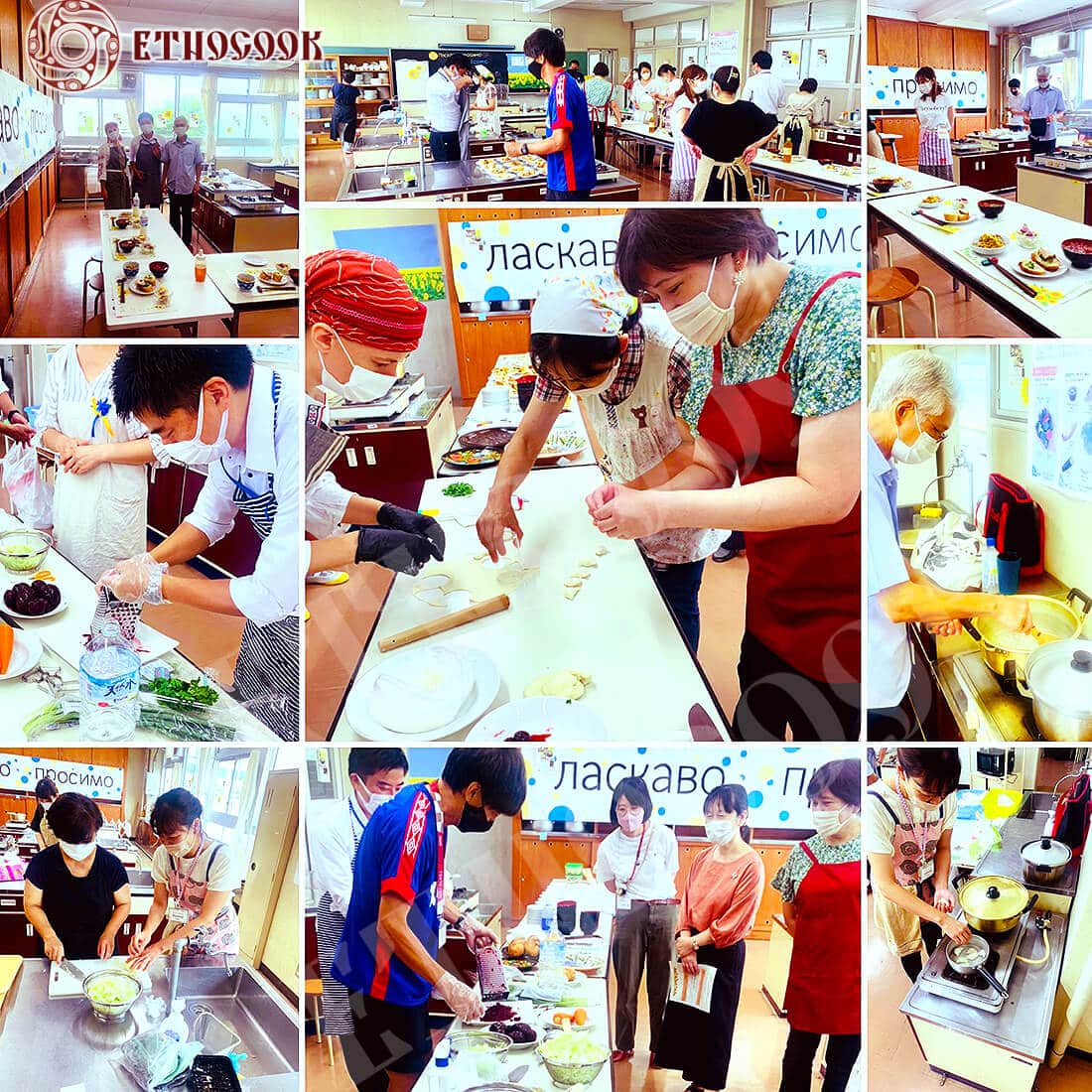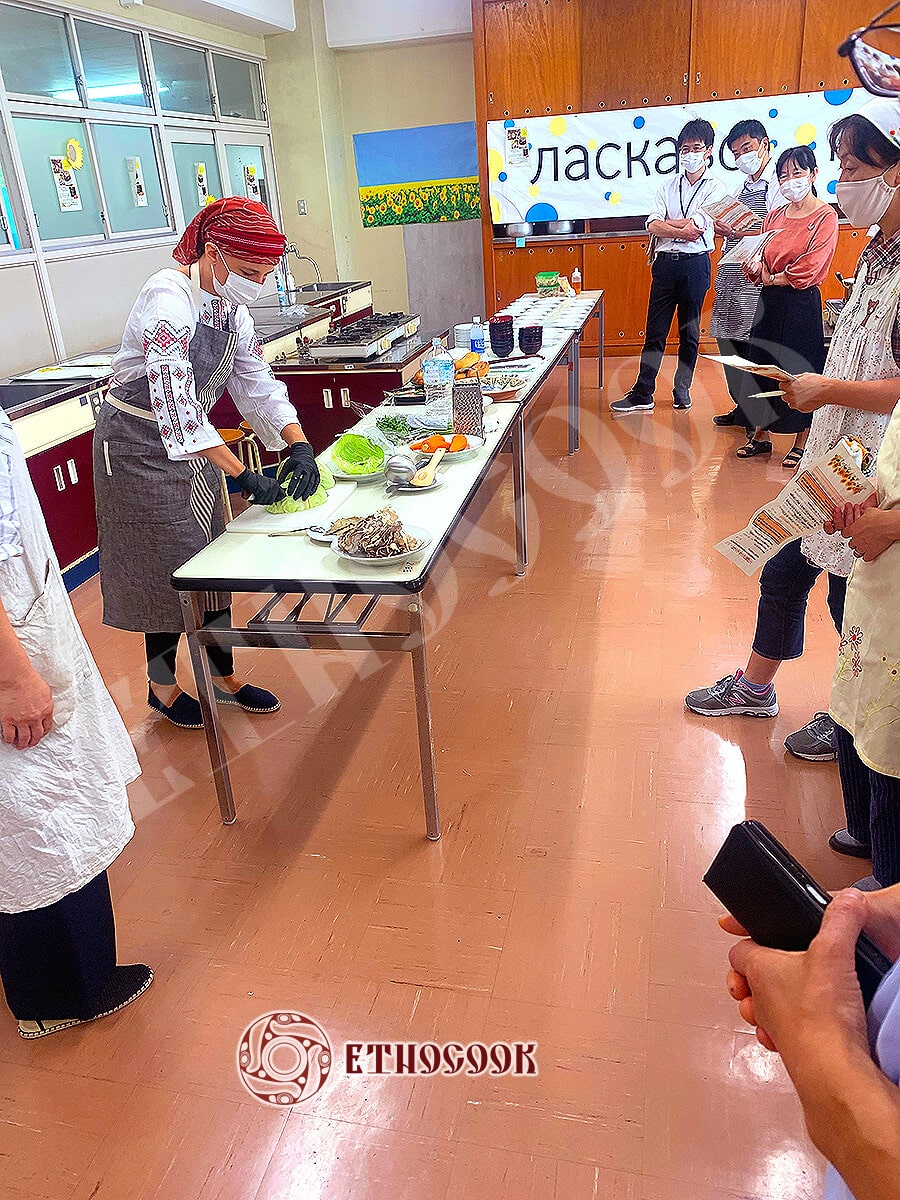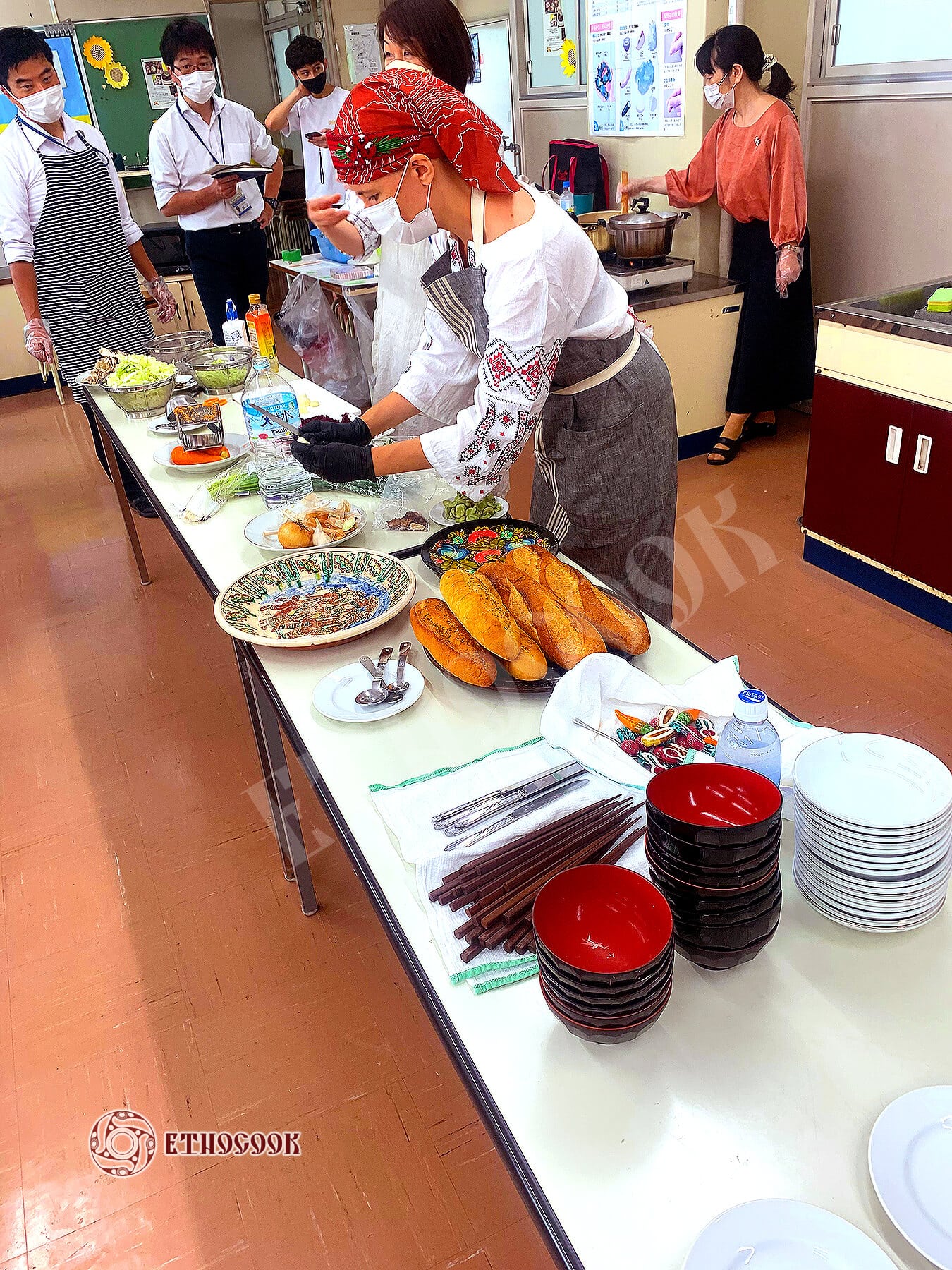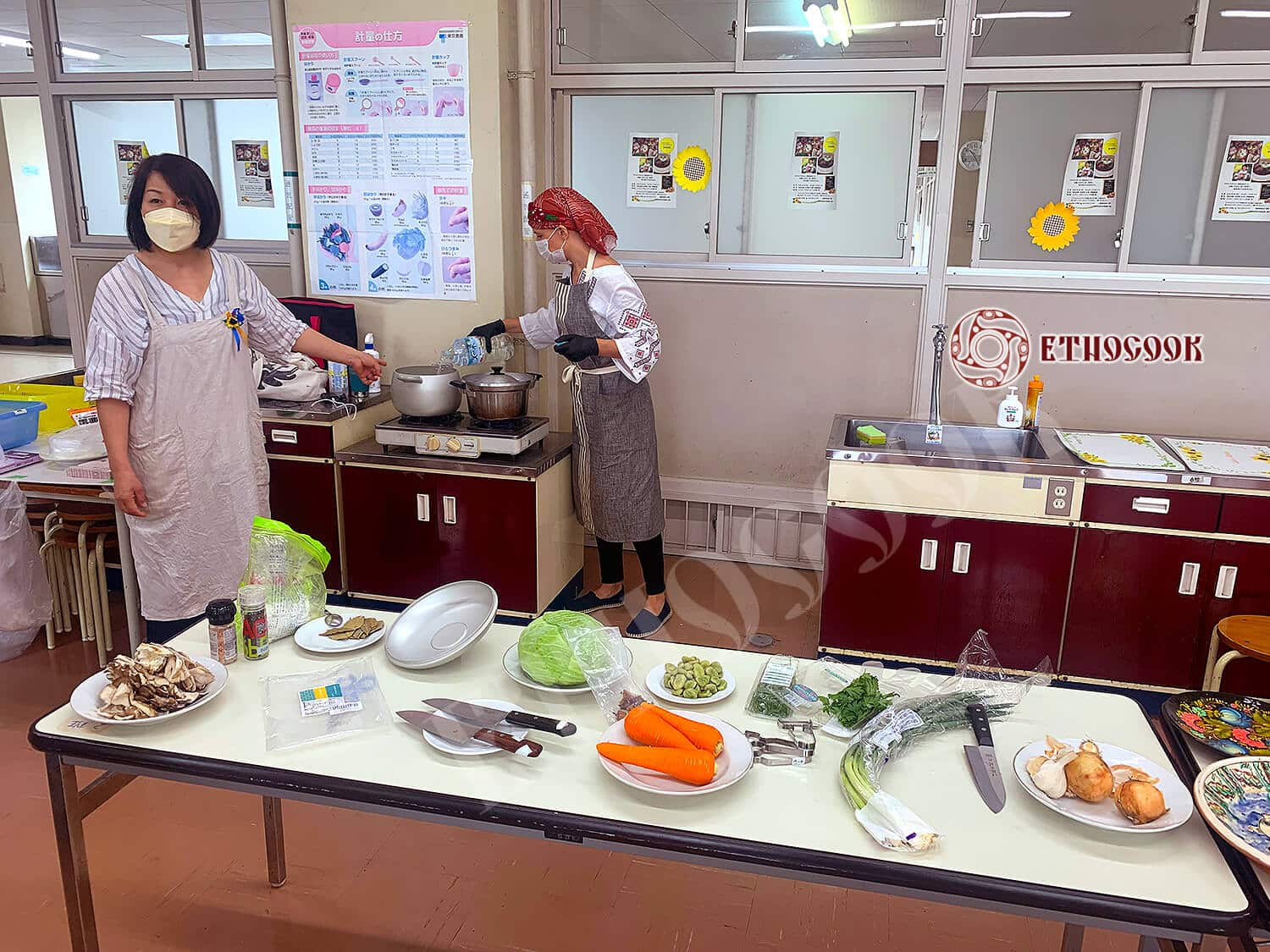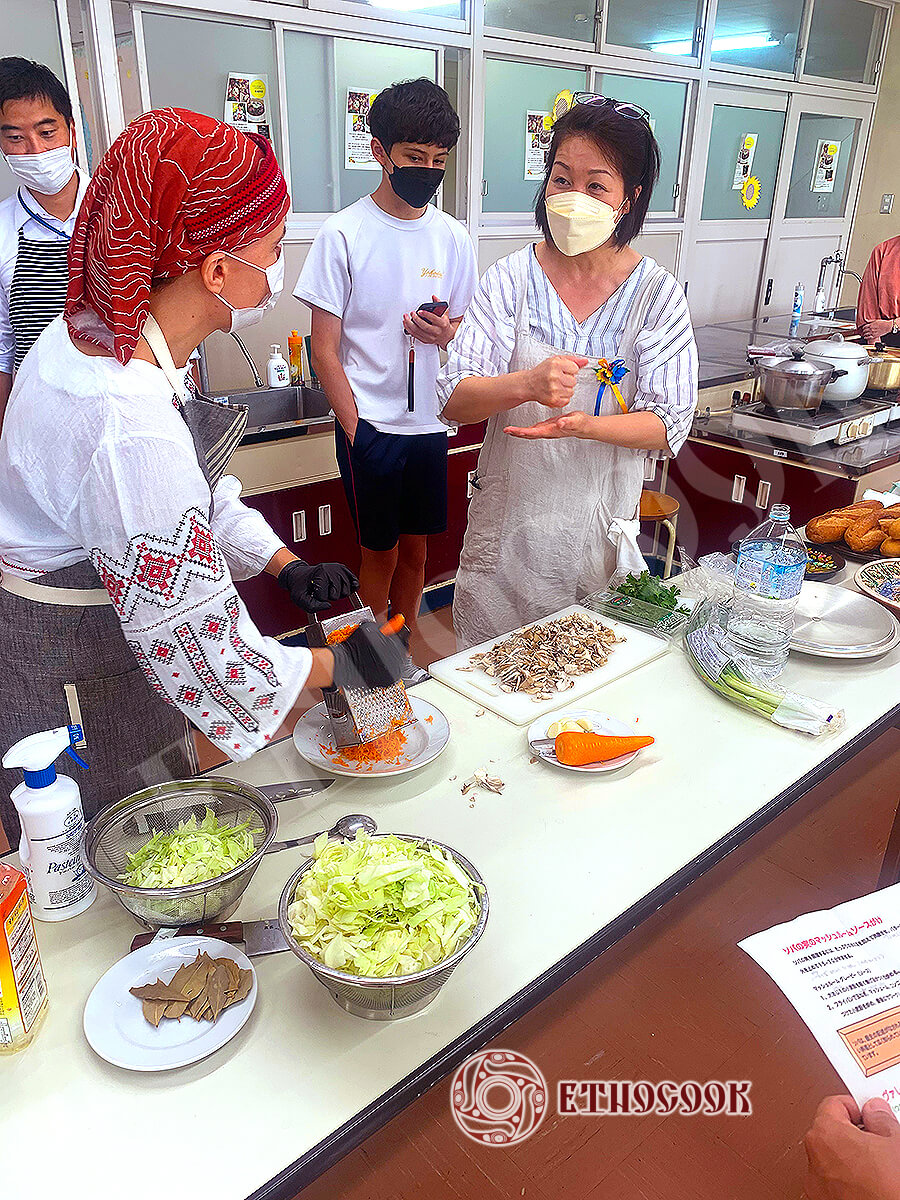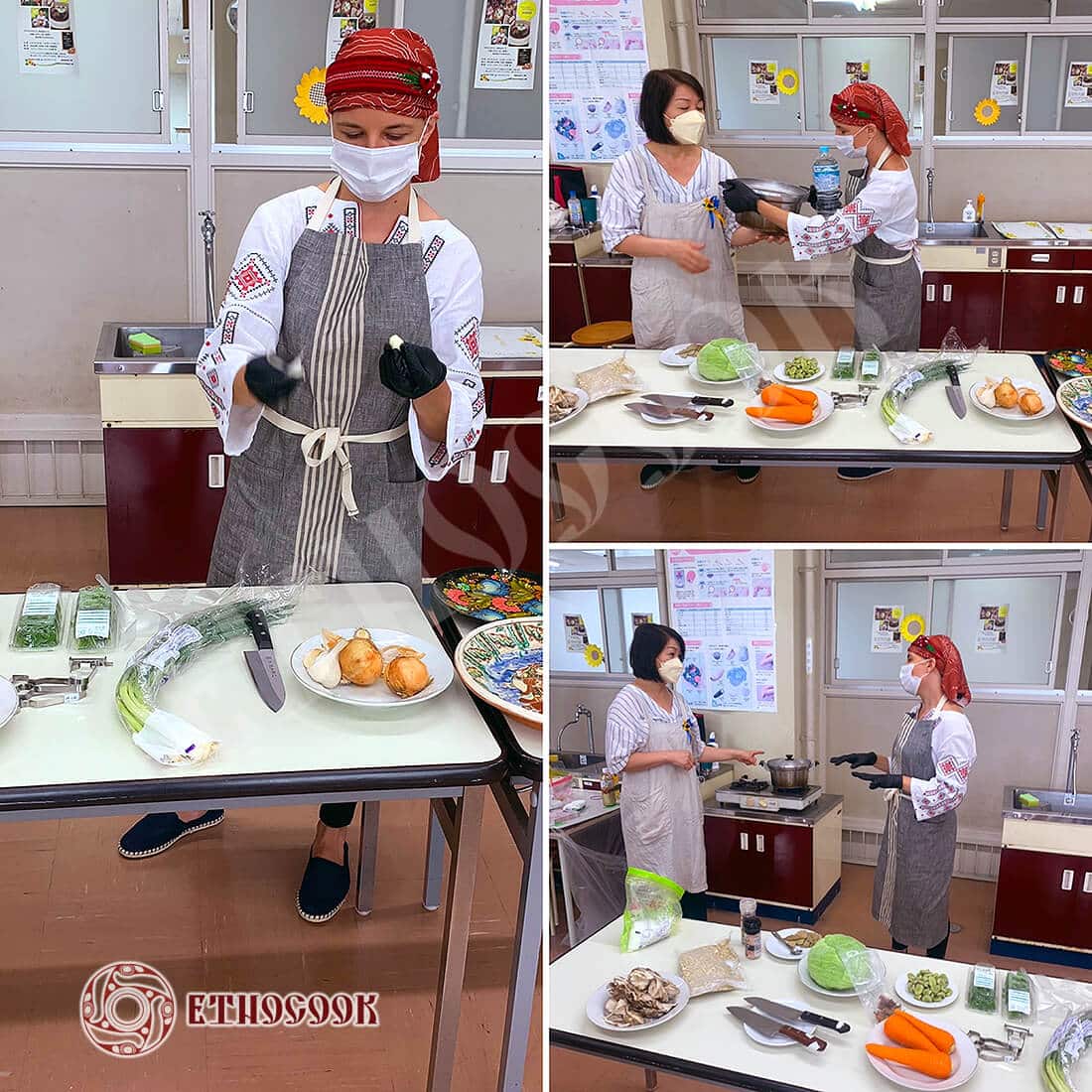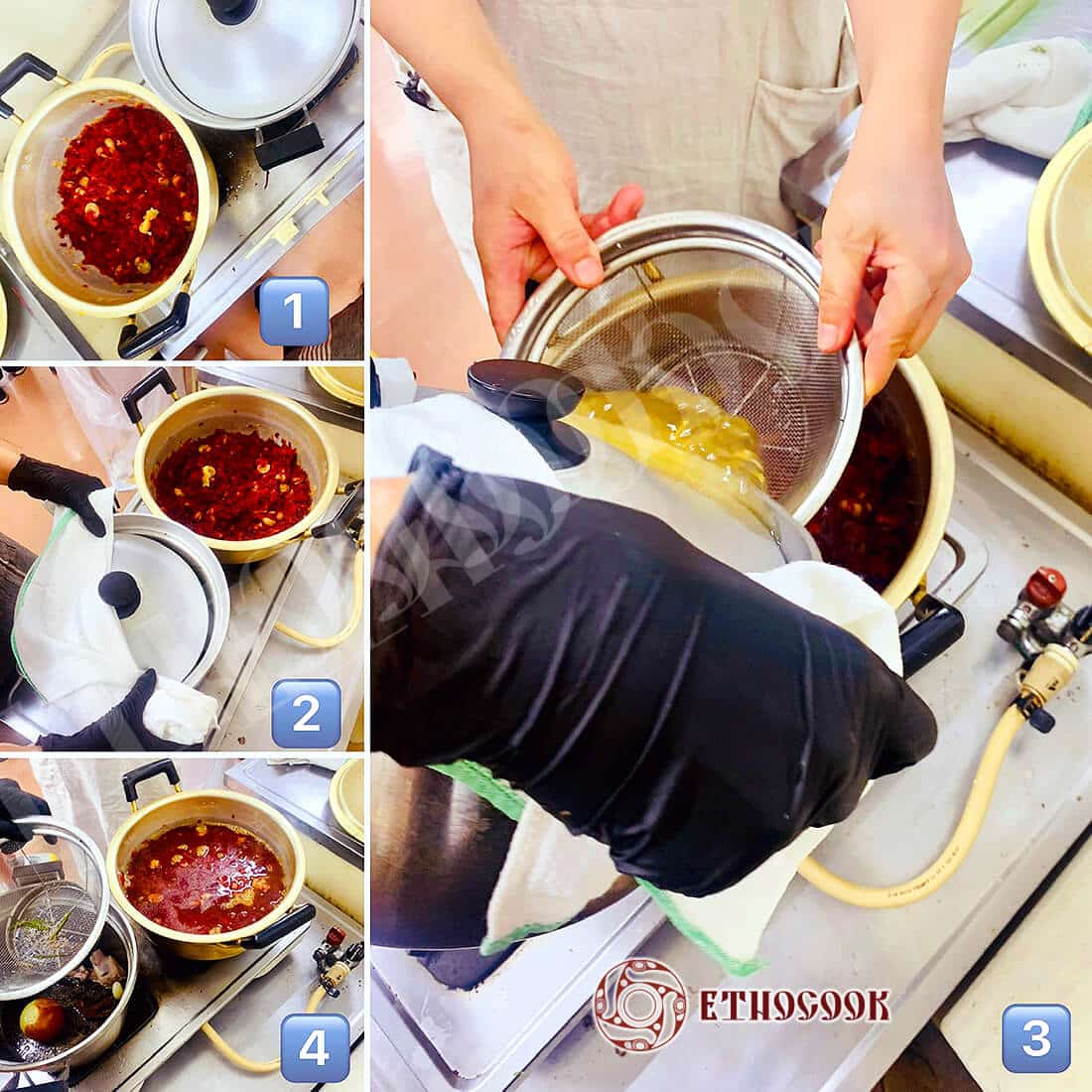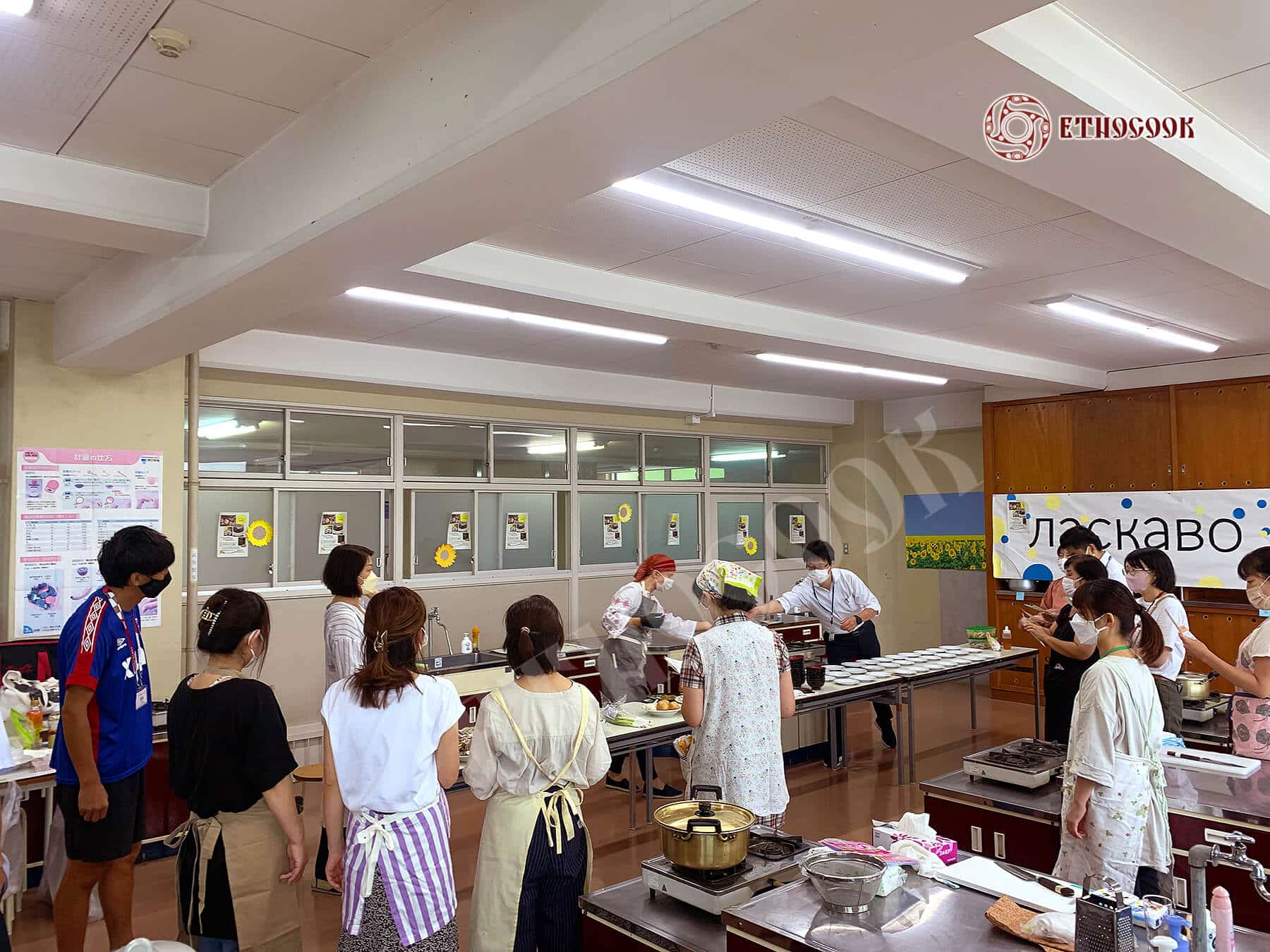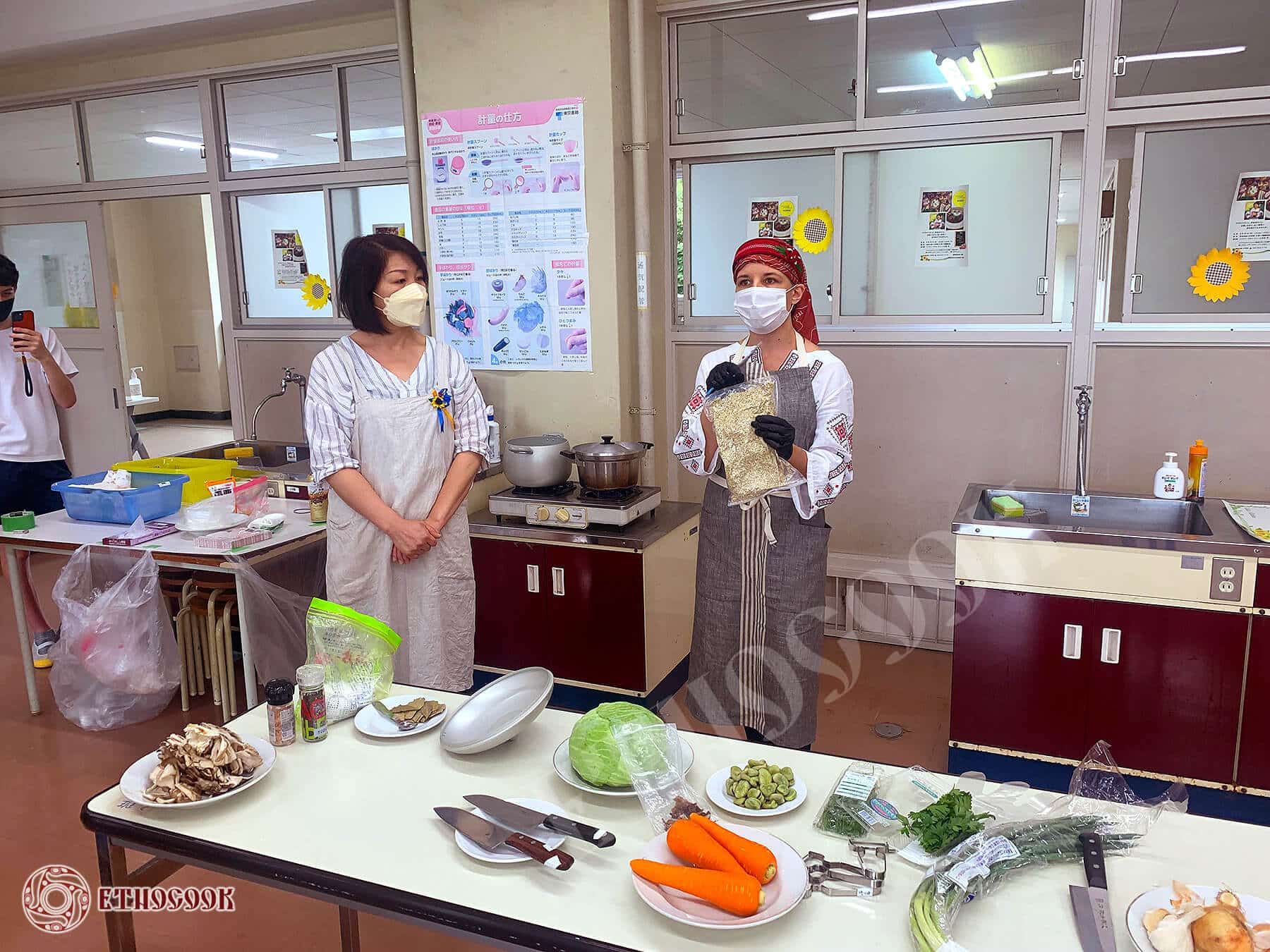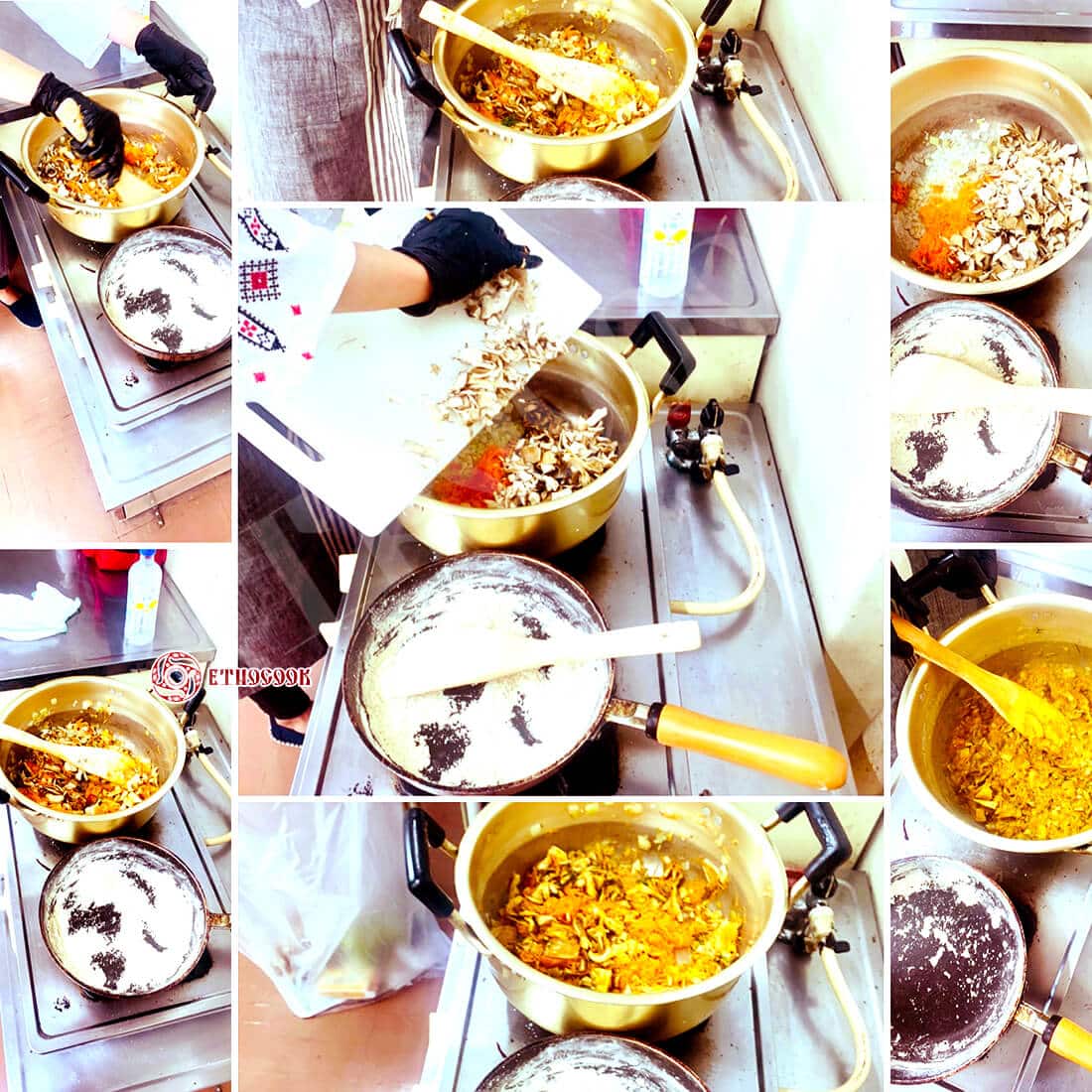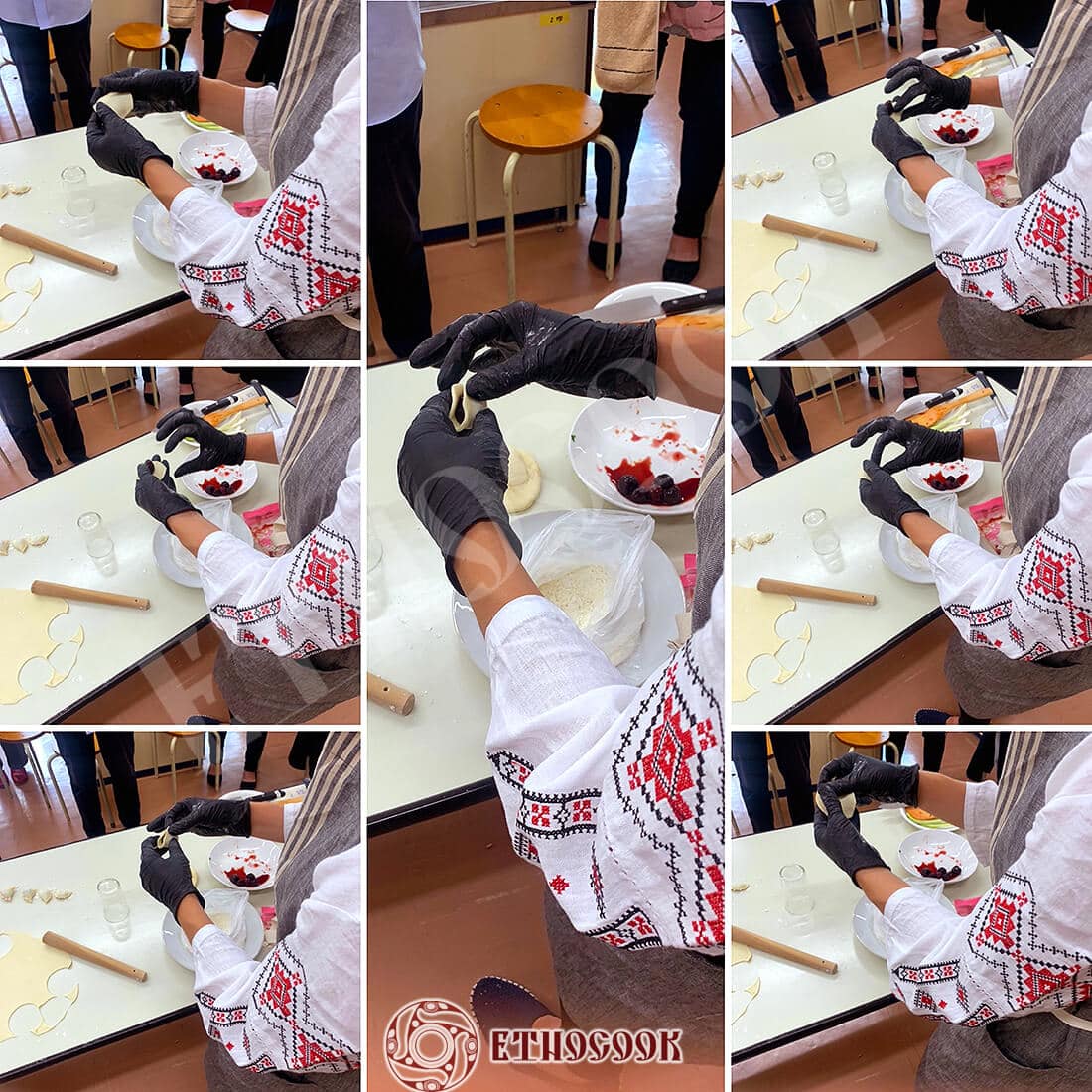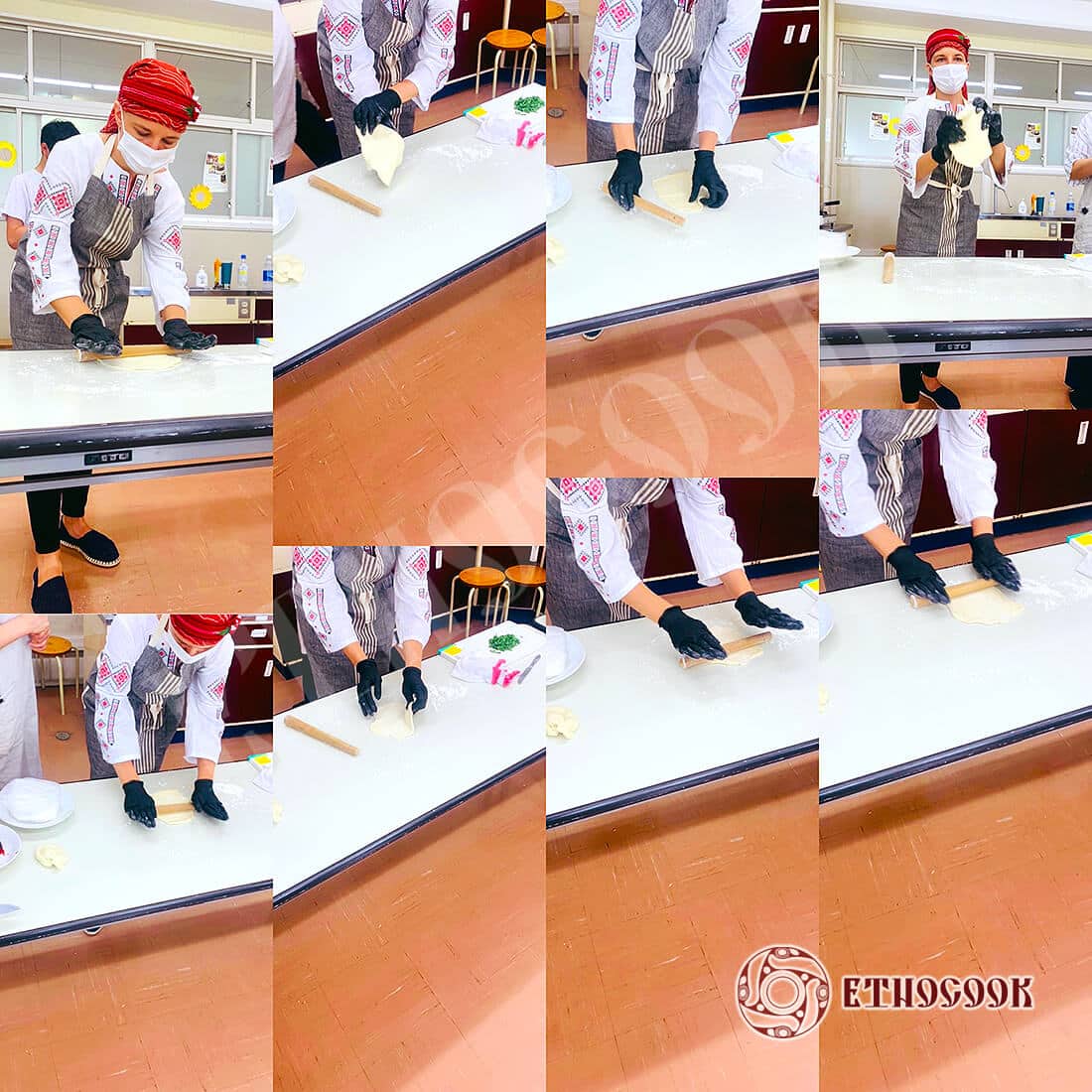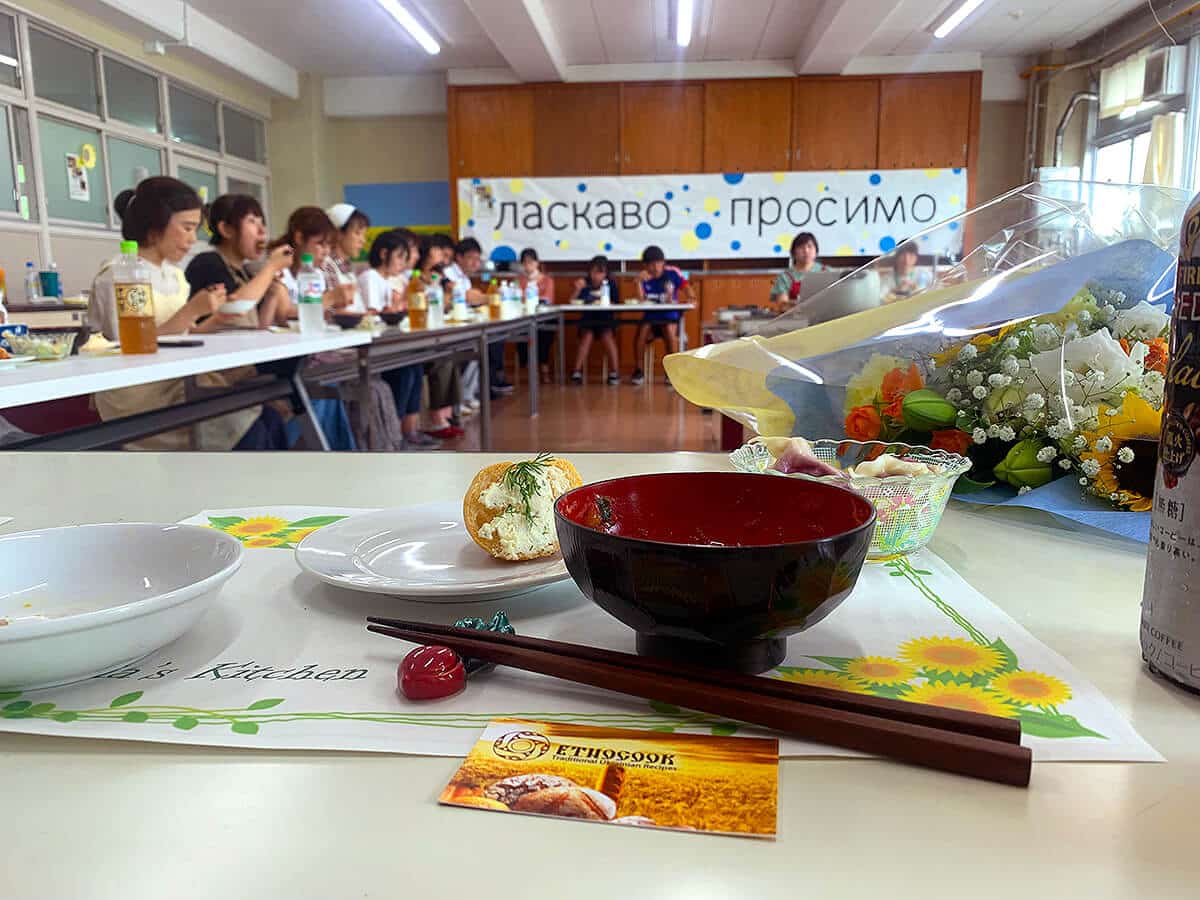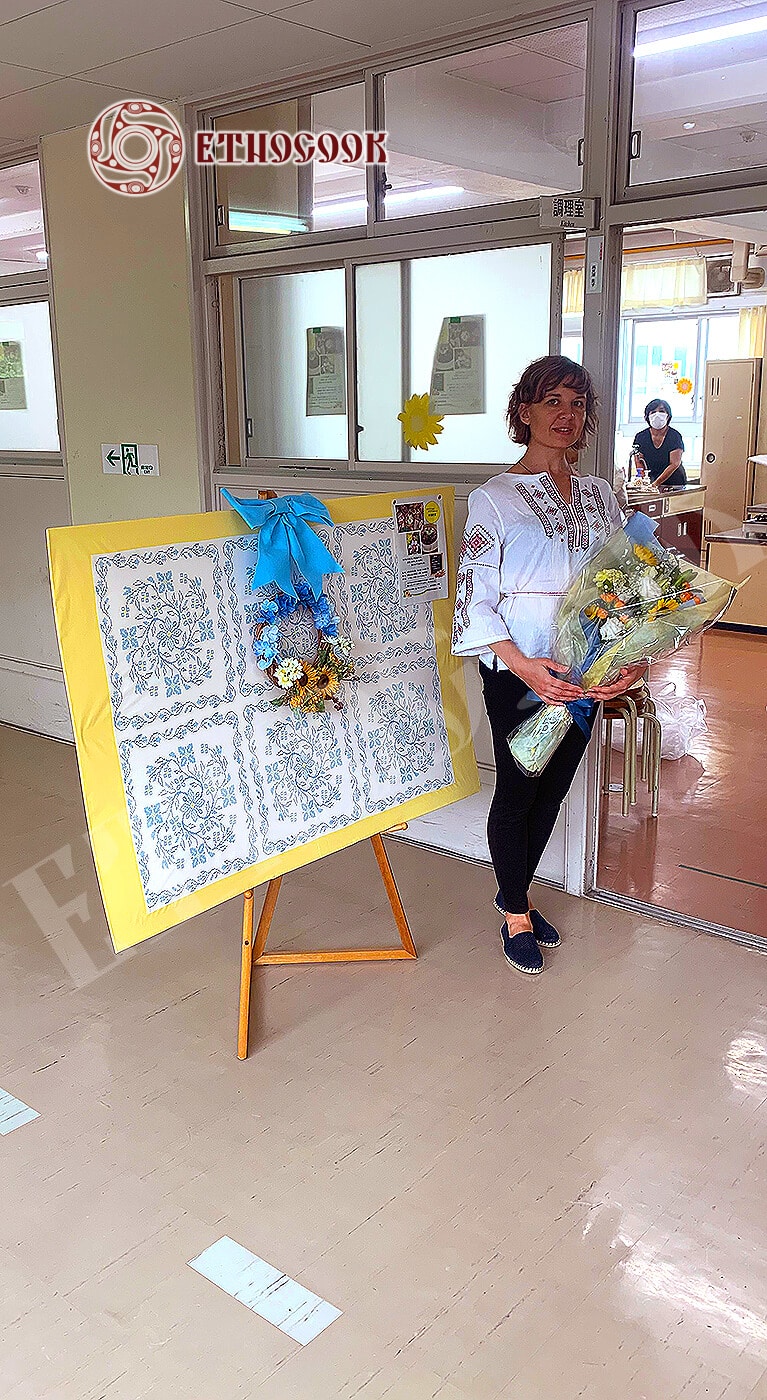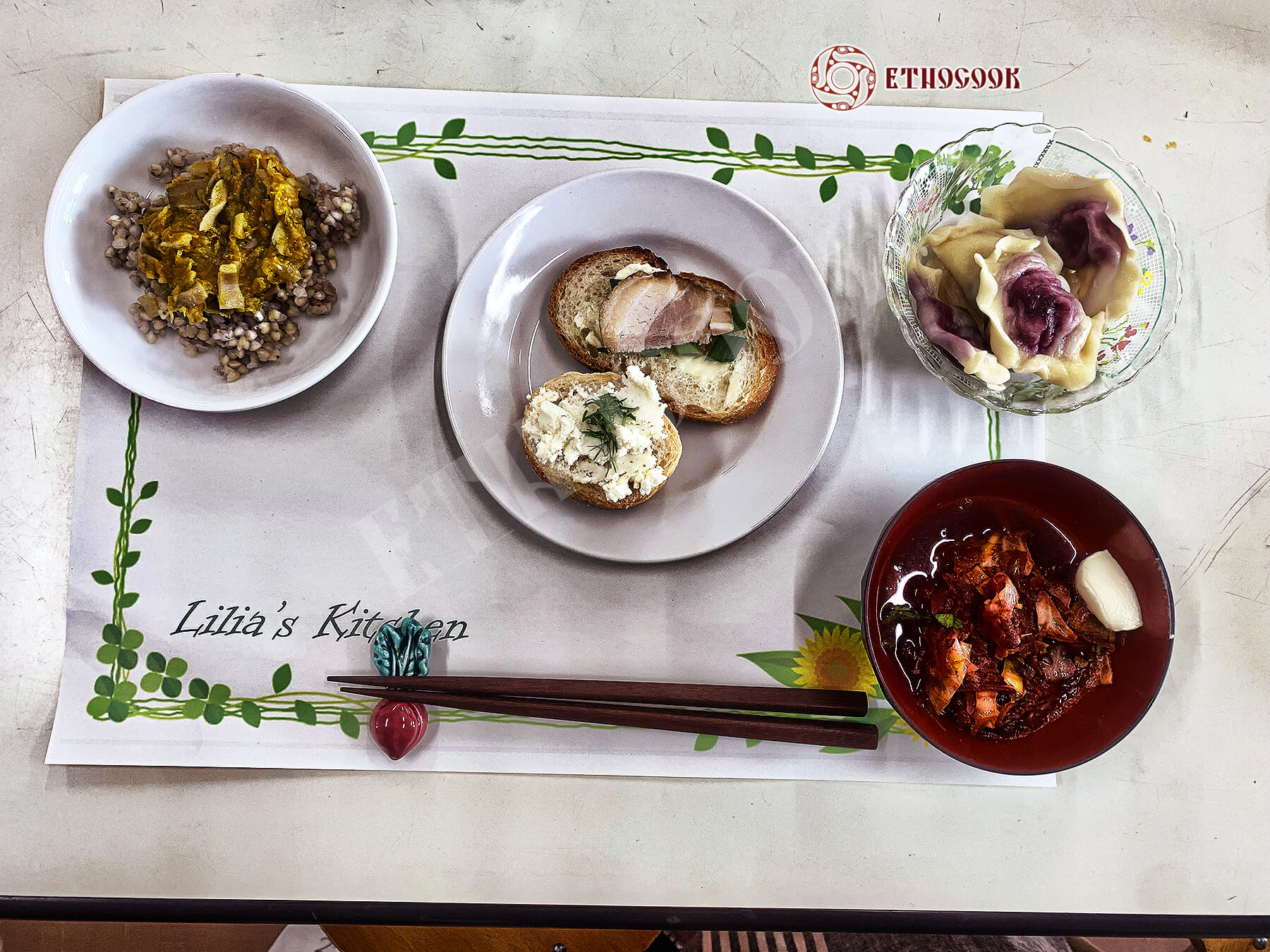
- What was the Ukrainian cooking master class in Japan about?
- Ukrainian dishes made during a cooking workshop in Japan
- Where and when does the Ukrainian cuisine cooking class take place in Japan
- Japanese kitchen utensils that are needed to make a Ukrainian food cooking class
- Recipes and ingredients that were used for Ukrainian cuisine master class in Japan
1. What was the Ukrainian cooking master class in Japan about?
To tell You the truth, to prepare and make a real Ukrainian cooking master class using my Etnocook recipes in Japan was very exciting. It was called Lilia’s (Lilia Tiazhka) kitchen and was mostly a cooking practice with little lectures and interesting facts about Ukraine and Ukrainian cooking traditions.
In fact, being a 15 years experience chef of the traditional Slavic cuisine (which totally originates from Ukraine), I haven’t provided a master class for a big group of people, who haven’t tried even the most famous Ukrainian dishes in the world.
And finally, participants of my cooking workshop in Japan had an opportunity to watch how to make the Ukrainian traditional first-course soup Borsch from Japanese foods, Buckwheat porridge with mushrooms, Ukrainian stuffed with sweet cherries pasta Pyrohy (Varenyky), take an active part in the cooking process. As a result of this event everybody present at the meal preparing workshop in Kanagawa Prefecture, Japan, enjoyed the real Ukrainian lunch of three courses.
2. Ukrainian dishes made during a cooking workshop in Japan
This summer cooking master class included Ukrainian red beets soup Borshch, widespread in Ukraine buckwheat with mushrooms gravy, and dumplings Varenyky originating from Ukraine. Additionally, Japanese guests tasted two types of open sandwiches (Ukrainian Kanapky) from sourdough and usual yeast bread, with cream cheese, garlic, and dill, and with butter, green onions, and smoked meat.
3. Where and when does the Ukrainian cuisine cooking class take place in Japan?
The preparing Ukrainian meals master class for 16 people was provided by me, Lilia Tiazhka (your LilkaSky), Ukrainian traditional ethnic cuisine Etnocook’s main chef, with the help of local Japanese people, in Kanagawa Prefecture, Yokohama, Japan, on the 25th of August 2022.
The event took place in a fully equipped Japanese class for cooking, with gas heaters and sinks at each table, a knife sterilizer, a refrigerator, an air conditioner, and an electric multi-function oven. I can assure you, that this master class cabinet was totally cleaned up before and after the Ukrainian cuisine workshop, sterilized, all guests were registered, measured body temperature, washed properly hands, and wore masks. As you can see, I as a chef was all the time in an apron, with a covered head and gloves. Actually, it was comfortable and safe, totally protected we could relax, study new information about Ukrainian cuisine, and master cooking skills.
4. Japanese kitchen utensils that are needed to make a Ukrainian food cooking class
Kitchen utensils for the masterclass:
for the chef:
4 soup pots 5 l with lids
2 big knifes
middle knife
grater (グレーター)
strainer, big, for soup (めん類、野菜等の水切りに)
4 wooden spatulas (木のへら)
peeler
chopping board
ladle 200 ml(お玉杓子)
spoon
surface to make a dough
rolling pin (麺棒)
1 glass (as a form for Ukrainian Varenyky)
for guests, for cooking:
4 tables*4 persons
on each table:
4 chopping boards
4 knifes
for serving: napkins little or middle,
16 bowls 250 ml (for the Ukrainian red soup Borshch)
16 bowls 150 ml (for buckwheat with mushroom gravy )
16 bread plates (for sandwiches)
16 appetizer or dessert plates (for the Ukrainian sweet dish Varenyky with cherries)
16 pairs of chopsticks
water, tea
5. Recipes and ingredients that were used for Ukrainian cuisine master class in Japan
In fact, I like to cook and eat only fresh foods, so shopping was done two days before the event when I bought vegetables and put them into the refrigerator in the Japanese kitchen class, and exactly before the Ukrainian cuisine workshop event was bought everything else. Actually, eighty Ukrainian dumplings were also precooked by me just before the masterclass and brought still warm.
As it was said before, all the ingredients for the dishes originating from Ukraine had to be very fresh so they practically all were bought in the local grocery shops, except for buckwheat which had to be ordered through the internet. For dessert was used the honey exported from Ukraine, tasted good. As some fruits can be out of the season, Etnocook offers you to take frozen, as it was with sweet cherries for the Ukrainian stuffed pasta.
1. The old Ukrainian recipe of the red beets soup Borshch
Borshch is the Ukrainian red beet soup officially recognized by UNESCO (国際連合教育科学文化機関(こくさいれんごうきょういくかがくぶんかきかん、 United Nations Educational, Scientific and Cultural Organization) as the world cultural heritage originating from Ukraine. The first records are from the Kyivan Rus times ( IXth- XVIcenturies) however it was cooked by Ukrainian ancestors much earlier. In the traditional ethnic recipe of Borsch potatoes and tomatoes are not used as they were brought to Ukraine when its culture and food traditions were already formed.
nutrition value: calories: 51 kcal/100 g, protein: 1 g, fats 2 g, fiber:1 g
Ingredients for 16 servings (200 ml):
water -3 l
beets – 1 kg
meat with bone: 300 g
onion – 1 middle size
carrot – 1 middle size
beans – 50 g
cabbage – 500 g
bay leaf – 2
garlic -1 clove
salt, pepper – to taste
sunflower oil – 30-50 ml
greens (parsley, dill, green onion) – to taste
beet kvass or lemon – to taste
1. Wash meat in the cold water, put in a soup pot, add clear water, bay leaf, spicy pepper, black pepper, an onion, a clove of garlic, salt, bring to boil, turn heat to a little and cook 1-5 hours. Take off meat, and vegetables and return bones to broth.
2. Separately stew oil and onion, grated beets, carrot, garlic, cut into cubes meat, and pre-cooked beans.
3. Add the drained broth to stewed vegetables, cut cabbage and put it in the pot, bring to boil, add kvass or lemon, turn off the heat, and cover lid. Let rest for 30 min.
4. Serve Ukrainian Borshch in deep bowls with sour creams and chopped greens on top.
2. Ukrainian dish Buckwheat with mushrooms and vegetable gravy with added flour
Buckwheatソバ is a very typical and widespread healthy Ukrainian dish known since prehistoric times. Ukrainians are also unofficially known as “people who sow (plant) buckwheat”.
To cook buckwheat takes 500 g to 1 liter of water, and salt, bring to boil, add butter, turn off, and let rest for 15-30 min.
For the Ukrainian mushroom gravy (sauce): 1 tablespoon of flour fry to a light golden brown. Separately stew an onion, carrots, mushrooms, garlic, add salt, pepper, and bay leaf, add fried flour (for thickness), and mix. If needed, Etnocook advises adding some meat broth or water. Additionally, put sour cream or plain yogurt, and chopped dill.
2. Ukrainian Cherry dumplings Varenyky
Ukrainian dumplings Varenyky (ヴァレーヌィク, ヴァレーヌィクィ, ヴァレーニキ) were very symbolic and cooked during sacral holidays in Ukraine before Christianity when Ukrainians had a religion very similar to Shinto. The dumpling Varenyky has a form of a crescent (half moon). There are a lot of special fillings inside, it depends on the occasion and the season, you can find on the Etnocook website a lot of information about the ancient traditions of making Varenyky. Keep in mind, that they have nothing in common with the Chinese dish gyoza, Ukrainian culture is very ancient and lands very rich, it developed its unique culture and food traditions in its own authentic way.
For Ukrainian Varenyky with sweet cherries: make 500 g of dough from flour and water, and let it rest for 10-20 min. Roll the dough out, make rounds, put a cherry in the middle, and press the edges. Put into boiling water and cook 1 min after it comes on top. Serve with honey, sour cream, butter, and jam.
3. Ukrainian slices of bread with cheese and meat topping (Ukrainian sandwiches Kanapky)
The fun part was when the participants made Ukrainian sandwiches by themselves, I only showed how and explained the idea. The job was made really great! Remember the tip from Ukrainian cuisine Etnocook that there can be not too many appetizers and sandwiches, and make always a couple more.
In the end the Ukrainian food was served by me with the help of guests and eaten in a very special atmosphere in a group of real partners who worked hard and had a truly earned reward.
After the Ukrainian etnic cusine master class in Yokohama, we had a traditional lunch, just as in Ukraine, tasted all the cooked authentic Slavic dishes, chat, listened to Ukrainian music, and had a really good time together.
In the end, I want to thank everybody who made this Ukrainian cooking masterclass in Japan possible to happen, translated, printed, decorated, cooked Ukrainian dishes, cleaned, and had lunch together, all participants. Your help and support are so very appreciated and valued a lot.
Author Lilia Tiazhka (Lilka Sky) for the Ukrainian traditional ethnic cuisine Etnocook

